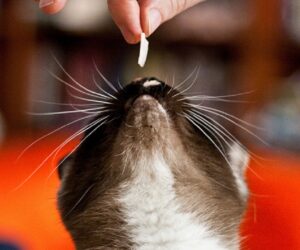Dogs are amazing creatures. They are loyal, friendly, and make great companions. However, one downside to owning a dog is the risk of fleas. Fleas can be very annoying for both you and your dog, and can also cause health problems. In this blog post, we will discuss seven tips to help you deal with fleas and prevent them from becoming a problem for your pet.

Flea Shampoo
Using a flea shampoo on your dog can help to get rid of any fleas that are currently on them. It is important to make sure you read the directions carefully, as some shampoos require that you leave it on for a certain amount of time before rinsing it off.
Another option is to use a topical treatment that will kill the fleas and larvae present on your pet. These treatments are available over-the-counter at most pet stores. Another popular treatment is itchoff subscription box for dogs which is a non-toxic, all-natural monthly box that helps to prevent fleas and ticks. If you are finding fleas on your dog regularly, it might be a good idea to treat both your pet and your home. It is important to read the directions carefully and make sure you follow them exactly so that you do not harm yourself or your pet.
Keep Your Dog’s Environment Clean
One of the best ways to prevent and deal with fleas is to keep your dog’s environment clean. This means regularly vacuuming your floors and furniture, and washing your dog’s bedding in hot water. It’s also important to keep any areas where your dog spends time free of debris and pests like ticks and mosquitoes. If you have a yard, make sure to mow it often and get rid of any tall grass or weeds that could harbour fleas. You can also put down mulch or gravel around your home to discourage pests from entering. If you live in an area with a lot of bugs or other parasites, consider using a flea and tick preventative medication.
Flea Collar
A flea collar is a great way to keep your pet protected from fleas. There are many different types of flea collars on the market, so be sure to choose one that is right for your pet. Flea collars work by releasing a chemical that kills fleas on contact. They are also effective at preventing new fleas from attaching to your pet. Be sure to read the instructions carefully before using a flea collar. Some collars can be harmful if they are not used properly. It is also important to replace the collar regularly, as it will lose its effectiveness over time.
Flea Comb
A flea comb is a great tool to have on hand to help deal with and prevent dog fleas. Combing through your dog’s fur regularly with a flea comb can help remove any fleas or eggs that may be present. In addition, it can also help stimulate the natural oils in your dog’s skin which will help keep their coat healthy and shiny. Be sure to check the comb for any signs of fleas or eggs after each use and discard them in an outdoor trash bin. If you’re having trouble keeping up with all the combing, consider using a handheld vacuum cleaner specifically designed for pet hair. These vacuums are easy to operate and work well at removing both dirt and Fleas from your dog’s coat. Just be sure to check the filter regularly and clean it as needed to prevent any clogging.
Monitor your Dog for Signs
Fleas are relatively easy to spot on dogs, as they tend to jump around and congregate near the dog’s neck and head. However, not all flea infestations are so obvious, and some dogs may show few if any signs of an infestation. If you’re concerned that your dog may have fleas, watch for the following signs: excessive scratching or biting – especially around the ears, neck, and base of the tail, redness or inflammation around the skin, thinning hair, and black or white specks in the dog’s coat. If you notice any of these symptoms, take your dog to a veterinarian for diagnosis and treatment.
If your dog is diagnosed with fleas, the veterinarian will likely prescribe a topical flea treatment such as Advantage®, Frontline®, or Revolution®. These treatments are applied to the skin on the back of the neck and kill adult fleas before they have a chance to lay eggs. They also work to prevent reinfestation for about one month. It’s important to follow the instructions closely when applying these products, as overuse can lead to adverse reactions in some dogs.
Flea Spray
Flea spray is a great way to keep your dog from getting fleas in the first place. There are many different types of sprays available, so be sure to choose one that is safe for your dog. When using a flea spray, be sure to follow the instructions carefully. Spray your dog’s coat thoroughly, making sure to get all the way down to their skin. Avoid spraying near their eyes or mouth. Let the spray dry completely before letting your dog go outside. Be sure to reapply the spray every few weeks, especially if your dog spends a lot of time outdoors. Flea spray is an important part of any flea prevention plan.
Dietary Supplements
Adding a dietary supplement to your dog’s food can help boost their overall health and prevent fleas. Look for a product that includes omega-fatty acids, probiotics, or garlic as these ingredients are effective at preventing parasites.
Fleas are not only annoying for dogs, but they can also be dangerous. Not only do they cause itchiness and discomfort, but they can also transmit tapeworms, Bartonella henselae (the bacteria that causes cat scratch fever), and other diseases. By following these top tips, you can help keep your dog free of fleas and protect them from the many dangers that come with them.

Fleas are a common problem for both dogs and cats. They can cause skin irritation, hair loss, and even anaemia. Thankfully, there are some easy ways to prevent fleas from taking hold and making your pet miserable.



